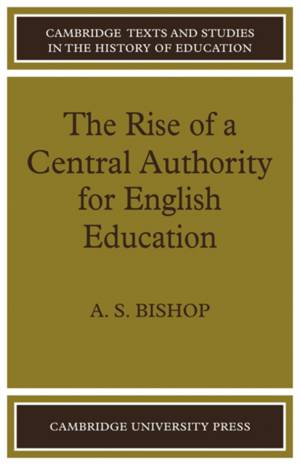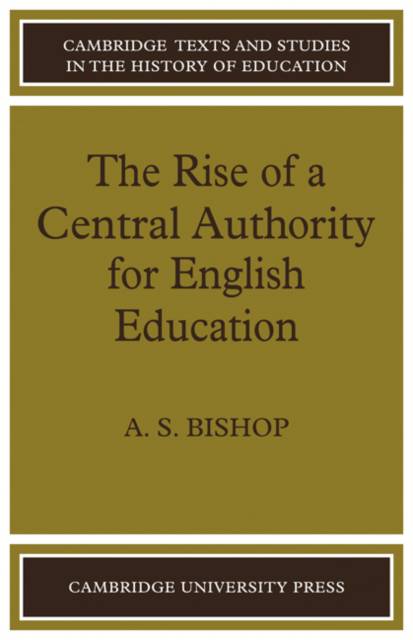
- Afhalen na 1 uur in een winkel met voorraad
- Gratis thuislevering in België vanaf € 30
- Ruim aanbod met 7 miljoen producten
- Afhalen na 1 uur in een winkel met voorraad
- Gratis thuislevering in België vanaf € 30
- Ruim aanbod met 7 miljoen producten
Zoeken
Omschrijving
This book traces the nineteenth-century formation, growth and structure of the central authority for education in England. The author uses a wide variety of published and unpublished material and describes the influences - religious, social, political and economic and others that moulded the authority. He considers the effect of the form of the three bodies that - originally held authority for education - the Education Department, the Science and Art Department and the Charity commission - on educational provision and progress throughout the Victorian era. In particular the author considers the impact of the machinery of government on the developing educational system. Dr Bishop discusses such questions as: to what extent was the provision and content of institutionalized education determined by essentially administrative considerations? What factors caused the fragmentation of such educational services as were then provided; and was the lack of unity of supervision at the centre the product of chance or design?
Specificaties
Betrokkenen
- Auteur(s):
- Uitgeverij:
Inhoud
- Aantal bladzijden:
- 324
- Taal:
- Engels
- Reeks:
Eigenschappen
- Productcode (EAN):
- 9780521086158
- Verschijningsdatum:
- 11/12/2008
- Uitvoering:
- Paperback
- Formaat:
- Trade paperback (VS)
- Afmetingen:
- 140 mm x 216 mm
- Gewicht:
- 412 g

Alleen bij Standaard Boekhandel
+ 121 punten op je klantenkaart van Standaard Boekhandel
Beoordelingen
We publiceren alleen reviews die voldoen aan de voorwaarden voor reviews. Bekijk onze voorwaarden voor reviews.











